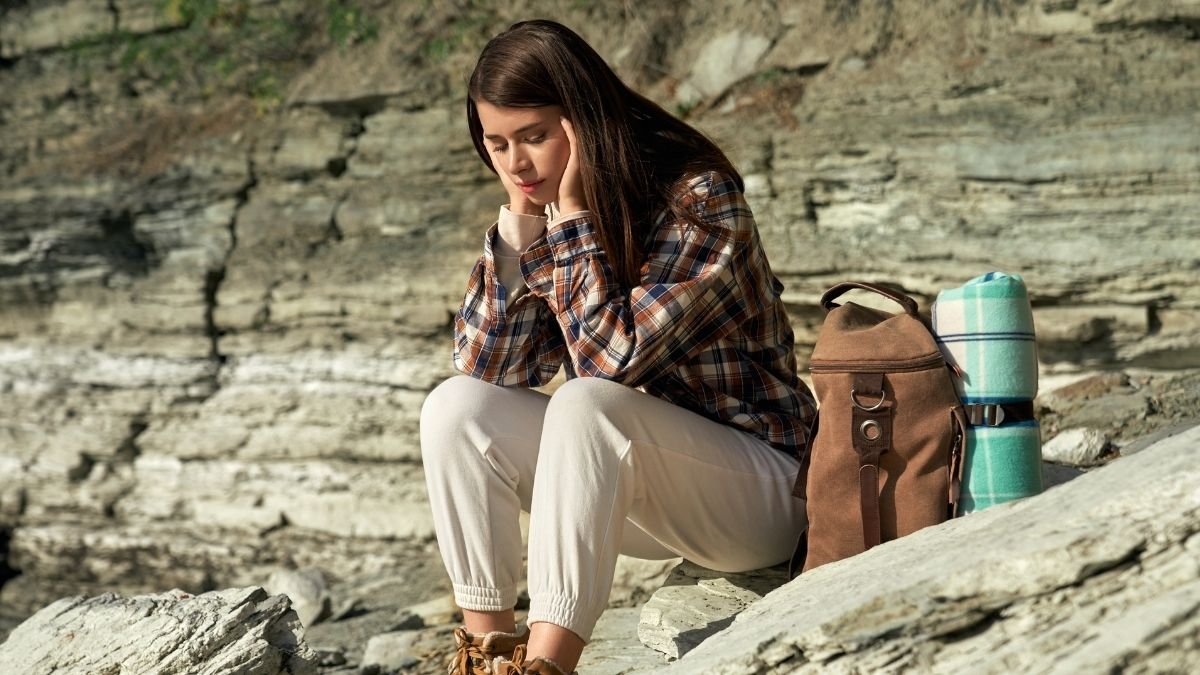It’s not the mountain that ends your hike. It’s not the storm, the bear, or a sudden stroke of bad luck. It’s the simple, avoidable mistake you made hours before you even locked your car.
The outdoors is unforgiving; it doesn’t care about your good intentions, only your preparation. That brand-new pair of boots, the cotton hoodie, or the one forgotten water bottle is a small thing that becomes a very big problem, fast.
These failures follow a pattern. This isn’t just a list; it’s a blueprint for what not to do. I’m breaking down the 15 critical errors that turn a great day out into a rescue operation. You can fix them before you even pack your bag.
1. Picking a Trail That’s Too Hard for You
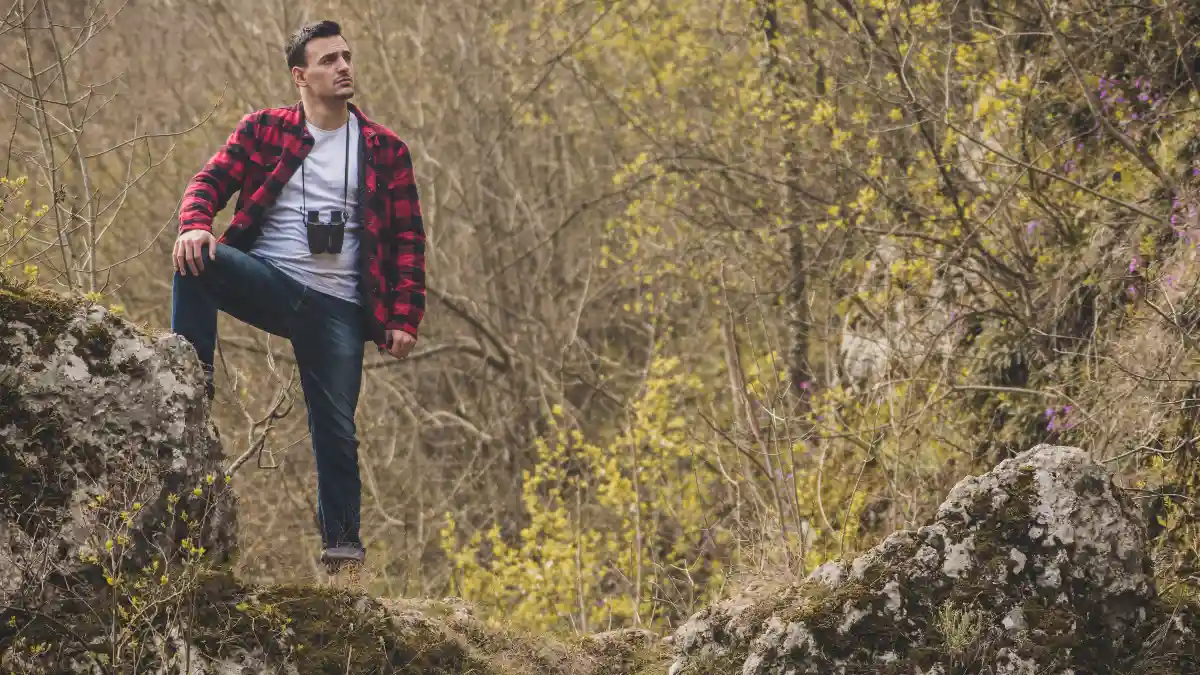
The Mistake: You pick a trail because it’s short or has a pretty photo. You don’t look at the elevation gain or what the ground is like. You don’t realize that a four-mile hike can be a flat, easy walk or a tough, steep climb over rocks.
Why It Ends Your Trip: You get completely worn out, far from your car. A trail that gains 1,000 feet per mile is steep. If you’re not ready for it, you’ll “hit a wall”. Being this tired ruins the fun.
It also slows you down, which means you might get stuck on the trail after dark. When you’re tired, you don’t think clearly and are more likely to slip and fall. Slips and falls are the #1 cause of mountain accidents.
The pretty photo you saw online made the trail look easy, but the reality is much harder. This is the first mistake that leads to most hiking problems.
The Fix: Start by asking a different question. Instead of “Is it pretty?” ask, “What will this trail demand from me?”
- Be Honest With Yourself: The National Park Service (NPS) says you should “Recognize your abilities” and pick a trail that works for your whole group. It’s smart to start with easy trails and work your way up to harder ones.
- Check These Three Things: Before you go on any hike, you need to look at three key numbers:
- Total Distance: How many miles is the round trip?
- Total Elevation Gain: This number tells you how hard the hike really is. A gain of 1,000 feet per mile is a good sign that the trail is steep.
- Recent Trail Conditions: You can find this online easily. Check sites like AllTrails or official park websites. They will tell you about snow, mud, fallen trees, or trail closures. A trail that was easy last month could be dangerous today.
2. Wearing Cotton Clothes and Socks
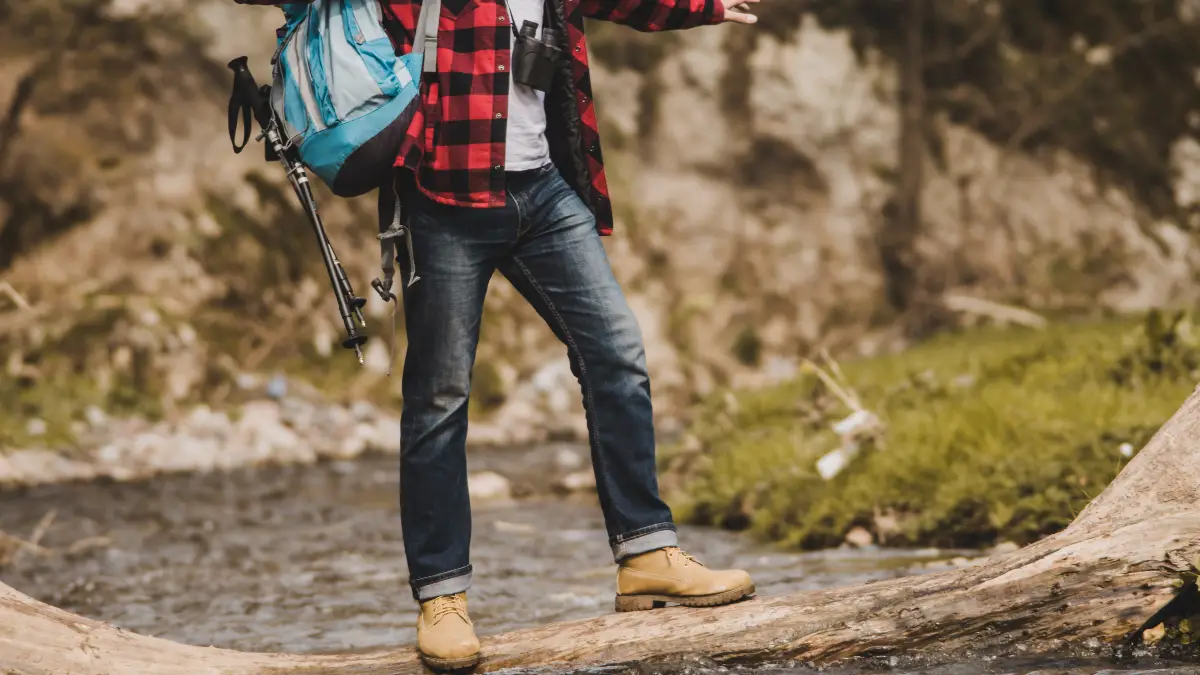
The Mistake: You wear clothes made of cotton. This means jeans, cotton t-shirts, hoodies, and especially cotton socks.
Why It Ends Your Trip: You’ve heard “cotton kills,” and it’s true. Cotton soaks up sweat and rain like a sponge. Once it’s wet, it loses its ability to keep you warm and takes a very long time to dry.
It pulls heat away from your body, which can cause your core temperature to drop fast. This leads to hypothermia. The NPS calls hypothermia the “#1 killer in the outdoors”.
It can happen even when it’s 50 degrees F if you are wet and it’s windy. Getting wet in the city is no big deal. In the backcountry, it can be the first step toward a deadly situation.
The Fix: Wear layers made of the right materials. This will keep you safe and comfortable.
- How to Layer: Smart hikers use a simple three-layer system. This lets you adjust to changing weather.
- Base Layer: This is the layer against your skin. Its job is to pull sweat away from your body. Use synthetic fabrics like polyester or natural ones like merino wool.
- Mid Layer: This is your warm layer. It traps your body heat. A fleece jacket or a puffy jacket works well.
- Shell Layer: This is your outer layer. It protects you from wind and rain. A waterproof jacket is a must-have.
- Your Socks Are a Big Deal: Wear wool or synthetic socks. They pull moisture away from your feet, provide cushion, and help stop blisters. They also keep your feet warm even if they get damp.
3. Thinking “It’s Just a Day Hike” and Forgetting Essentials
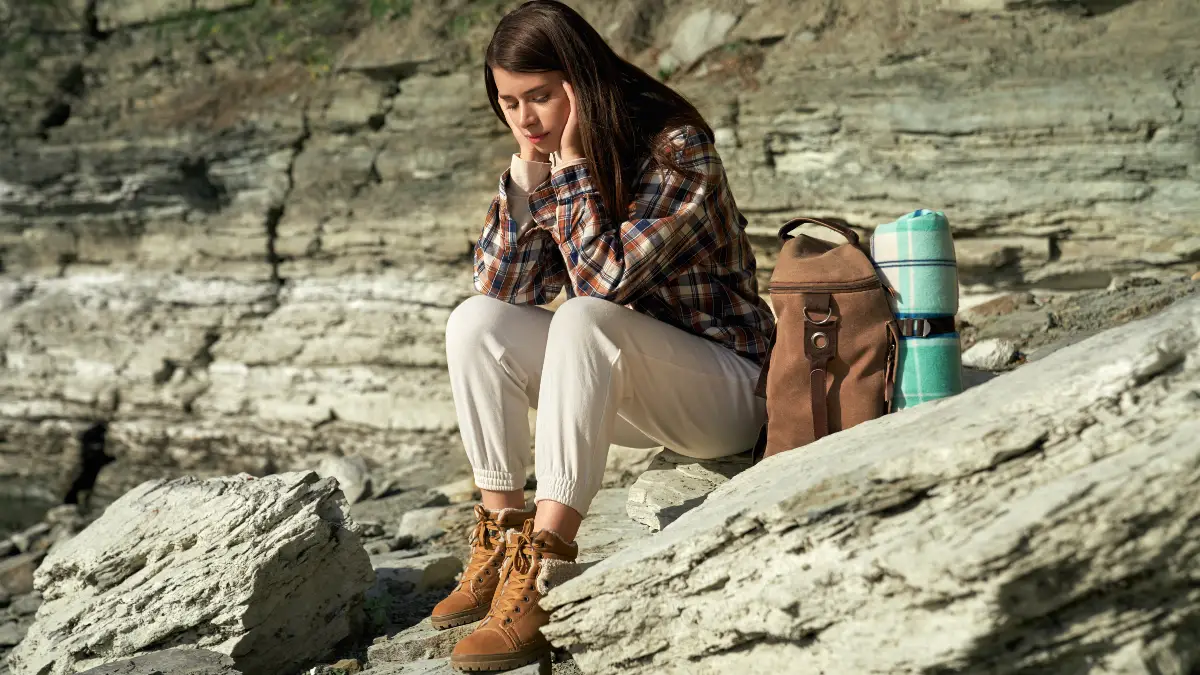
The Mistake: You think a day hike is just a long walk. You only pack your phone, keys, and maybe one bottle of water. You forget that things can go wrong in the outdoors. A short trip can turn into a long one fast.
Why It Ends Your Trip: A simple accident, like a twisted ankle, can turn your day hike into an unplanned night outside. This is a “miserable mistake” if you’re not ready.
Without the Ten Essentials, you have no light, no way to stay warm, no extra food or water, and no emergency shelter. A small problem becomes a real survival situation.
About 10 percent of all rescues in national parks are because of bad gear or not enough clothing. You don’t pack the Ten Essentials for the hike you plan to have. You pack them for the hike you could have if something goes wrong.
The Fix: Think “what if” and pack the Ten Essentials every single time you hike. It doesn’t matter if the hike is short or easy.
4. Wearing Brand New Boots on a Long Hike
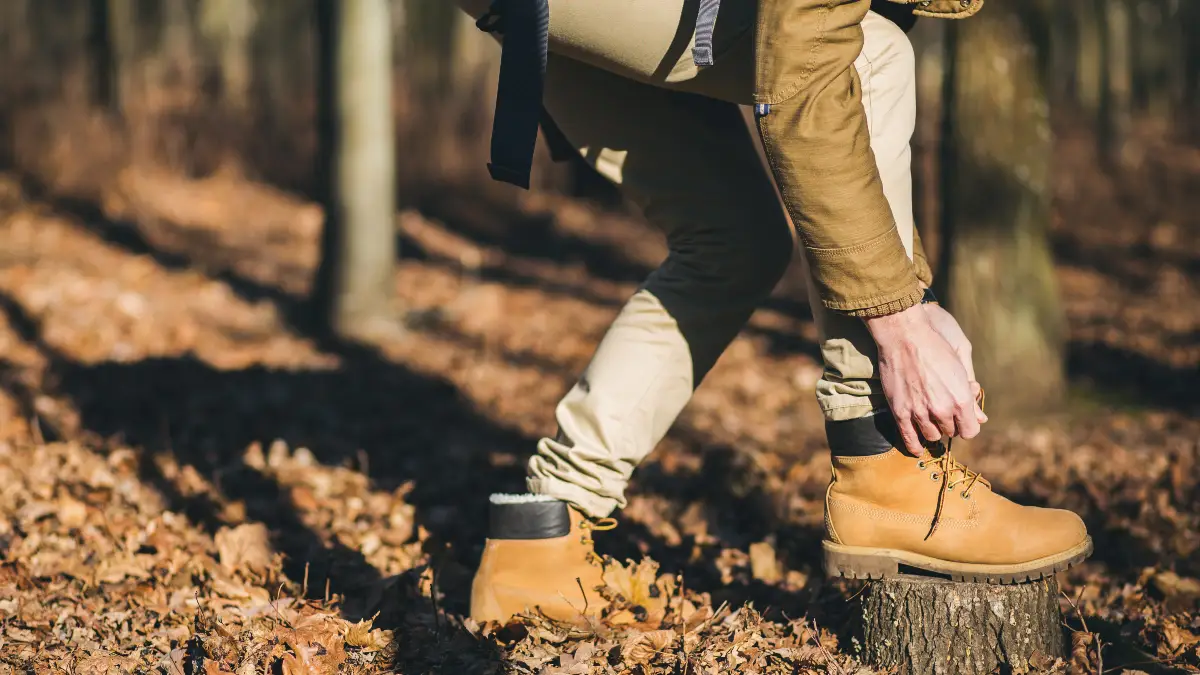
The Mistake: You buy new hiking boots the day before a big hike and wear them for the first time on the trail. You might also buy boots that don’t fit right because you’re new to this.
Why It Ends Your Trip: This will cause a lot of pain. Your shoes are the most important piece of gear connecting you to the trail. If your feet hurt, your hike is over. New, stiff boots will rub your feet and create “hot spots.”
These turn into painful blisters. The pain can get so bad you can’t walk. Blisters are a common reason people have to end their hikes early. The pain can also make you walk funny, which can lead to other injuries like a twisted ankle.
The Fix: You need to be smart about how you buy and prepare your boots.
- How to Buy Hiking Boots: Follow these simple rules to get the right fit.
- Shop in a Store: Go to an outdoor store where the staff can help you find the right fit.
- Shop in the Afternoon: Your feet swell during the day. Shopping later in the day helps you get a more accurate fit for hiking.
- Bring Your Hiking Socks: Try on boots with the same socks you’ll wear on the trail.
- Go a Half-Size Up: You often need a bigger size in hiking boots than your normal shoes. This gives your toes room on downhill parts.
- Break Them In: You must break in your new boots. This means wearing them around the house, then on short walks, and then on a short, easy trail. Do all this before you take them on a long hike.
This helps you find and fix any problem spots before they become painful blisters.
5. Not Telling Anyone Where You’re Going
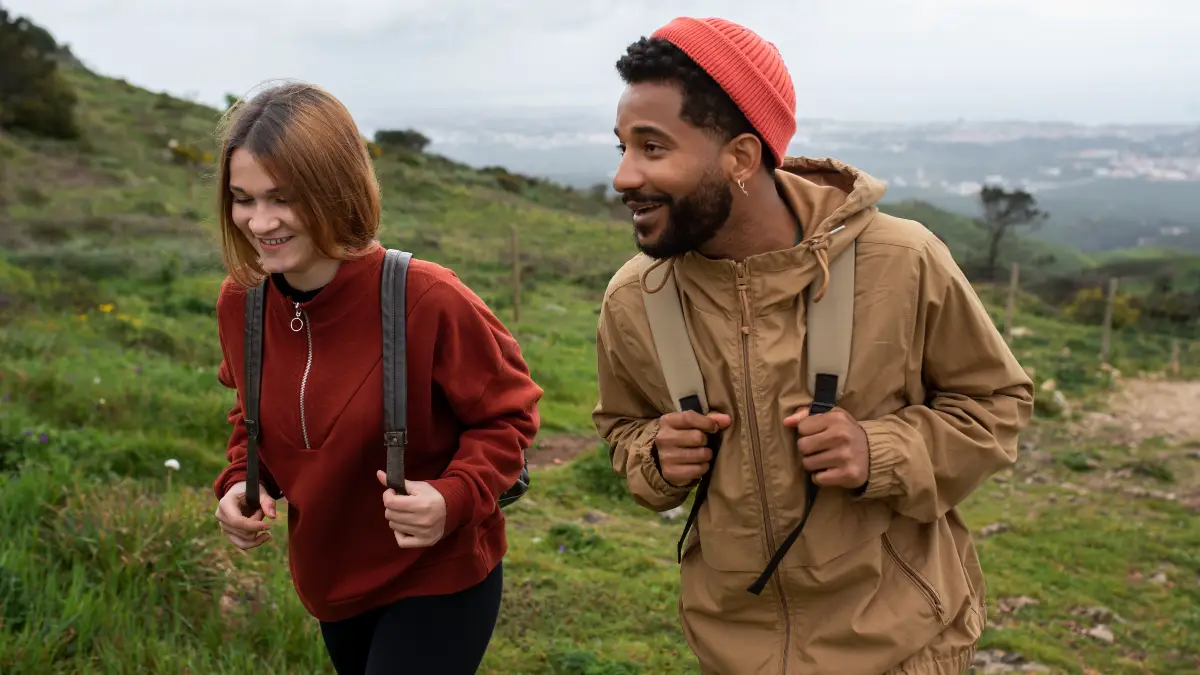
The Mistake: You decide to go for a hike on the spur of the moment. You don’t leave a detailed plan with anyone who isn’t on the trip with you. This is a common mistake, even for experienced hikers.
Why It Ends Your Trip (and Can End Your Life): This is a very serious mistake. If something goes wrong—you get hurt, you get lost, you get sick—no one knows you’re missing. When you don’t come back, no one knows where to start looking for you.
This turns a rescue into a huge search that often fails. The first few hours are the most important for a successful rescue.
But if no one knows where you are, those hours are wasted. Part of being safe in the outdoors is planning for things to go wrong. Leaving a trip plan is a smart, expert-level move.
The Fix: This takes five minutes and can be the difference between a quick rescue and a tragedy.
- Your Trip Plan Checklist: Leave a plan with someone you trust. It should include these details:
- Who: Your full name and the names of everyone in your group.
- Where: The name of the park, the trailhead where you parked, and your exact route.
- When: Your start time and a specific time to call for help if they don’t hear from you.
- What: A description of your car, including the make, model, color, and license plate.
- Check In When You’re Done: The second part of the plan is just as important. Call your contact as soon as you are safely back. This stops false alarms.
6. Ignoring the Weather
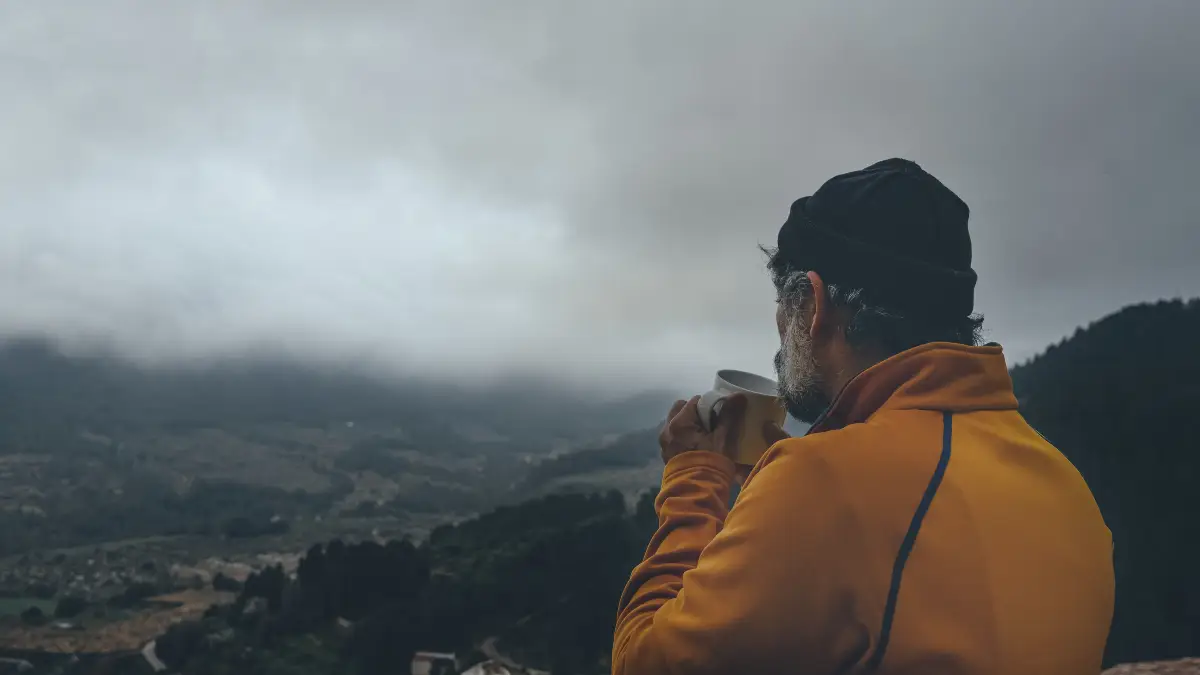
The Mistake: This is more than just forgetting a rain jacket. It’s not doing your homework. You might look at the weather for the nearest town, but you don’t check the specific forecast for the mountain, which can be very different.
You also ignore what you see on the trail, like storm clouds building up or the wind picking up.
Why It Ends Your Trip: In the mountains, weather is a big safety issue. A thunderstorm above the treeline is a serious lightning risk. A sudden rainstorm can cause flash floods and hypothermia, even in the summer.
Strong winds can make it impossible to cross ridges and can knock down dead branches. People make this mistake because they want to stick to their plan, even when it’s a bad idea.
The Fix: You need a solid plan for checking the weather.
- Check the Weather Multiple Times: Check the forecast a week before your hike, a few days before, and the morning of your hike.
- Use the Right Tools: Use sources that give you mountain-specific weather. The National Weather Service has point forecasts that are much more accurate for a specific peak than a general city forecast.
- Watch the Sky: Learn to read the signs. Dark, tall clouds mean a thunderstorm is coming. In places like the Colorado Rockies, afternoon thunderstorms happen almost every day in the summer. This means you need to start early and be down from the mountain early.
7. Not Eating and Drinking Enough
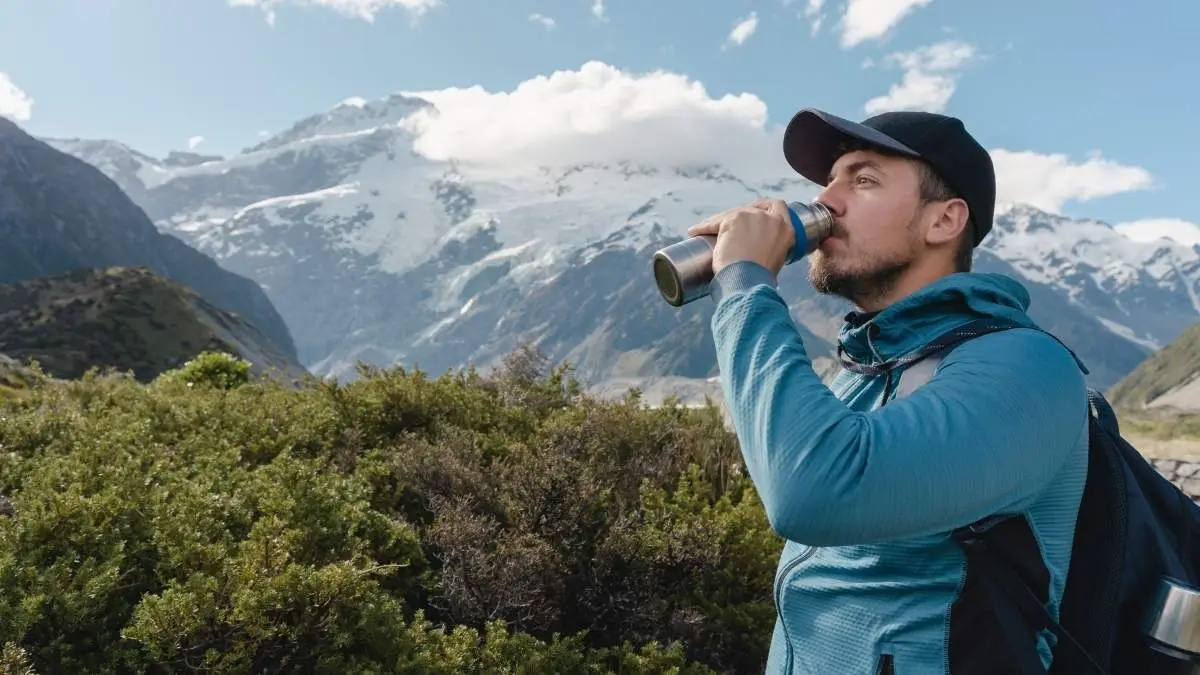
The Mistake: You don’t bring enough food and water. Or you bring enough, but you don’t eat or drink regularly. You wait until you’re starving or thirsty.
You might also lose your appetite and skip eating, or forget to eat salty snacks to replace what you lose when you sweat.
Why It Ends Your Trip: Your body needs fuel (calories) and coolant (water). If you don’t get enough water, you can get headaches, feel dizzy, and get muscle cramps. This can lead to heat exhaustion or heat stroke, which are very dangerous.
If you don’t eat enough, you’ll feel weak and tired. A tired brain makes bad decisions. You’re more likely to get lost or not notice the weather changing.
In a worst-case scenario, drinking too much plain water without eating salty snacks can lead to a deadly condition called hyponatremia.
The Fix: Eat and drink before you feel like you need to.
- Hydration Rules:
- Drink before you feel thirsty.
- A good rule is to drink about one liter of water every two hours. Drink more if it’s hot.
- Use the “Halfway Rule”: When you’ve drunk half your water, it’s time to turn around and go back.
- Snack Often: Eat a small snack of about 200 calories every hour. Good hiking snacks are things like nuts, dried fruit, and energy bars. Pack food you’ll actually want to eat, even if you’re not that hungry.
8. Relying Only on Your Phone for Navigation
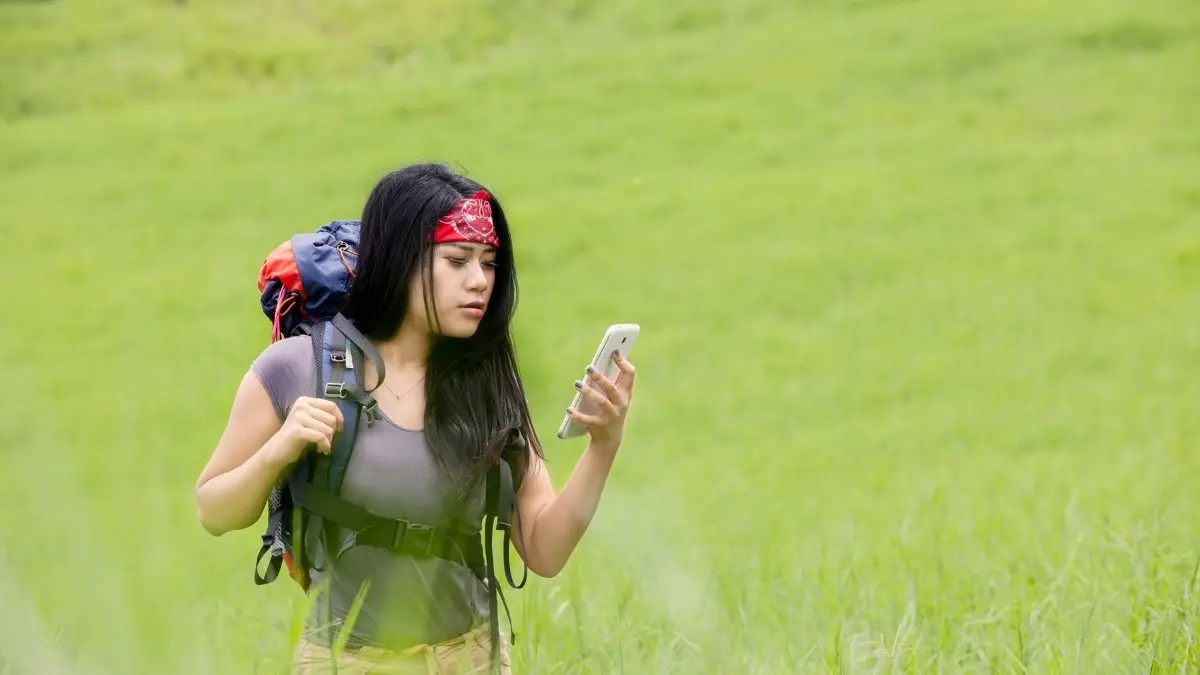
The Mistake: You only use a map app on your phone to find your way. You don’t bring a paper map and compass as a backup, and you don’t know how to use them.
Why It Ends Your Trip: This is a bad idea. Your phone can die, break, or lose service. When that happens, you’re lost. Relying only on technology gives you a false sense of security. It stops you from learning basic navigation skills.
The Fix: Use a mix of technology and old-school tools.
- Have a Backup: Always carry a waterproof paper map and a compass. They never run out of batteries.
- Learn the Skills: Take a class or practice using your map and compass on trails you already know.
- The “Look Back” Trick: Every so often, turn around and look back down the trail. This helps you build a mental map of what the trail looks like on the way back. It can stop you from getting confused.
9. Pushing Through Pain

The Mistake: You ignore your body’s warning signs. You feel a “hot spot” on your heel but decide to deal with it later. You feel really tired or sick but keep pushing to the top. You hide a small injury from your group because you don’t want to slow them down.
Why It Ends Your Trip: Your body is giving you important information. If you ignore it, things will get worse.
A hot spot you could fix in two minutes will turn into a painful blister. Feeling tired and sick could be the first signs of heat exhaustion. People make this mistake because of ego. They don’t want to seem weak.
The Fix: Take care of yourself. It’s the smart thing to do.
- Act Immediately: If you feel something, do something. Stop right away to treat a hot spot. Take a break if you feel dizzy. Tell your group if you’re not feeling well.
- Know the Warning Signs: Learn the signs of common problems. Heat exhaustion includes heavy sweating, weakness, and a headache. Heat stroke is more serious and includes confusion, hot skin, and fainting. Heat stroke is a 911 emergency.
- “Toughness” is Being Smart: Being tough in the outdoors isn’t about ignoring pain. It’s about being smart enough to fix small problems before they become big ones.
10. Starting Too Late and Running Out of Daylight
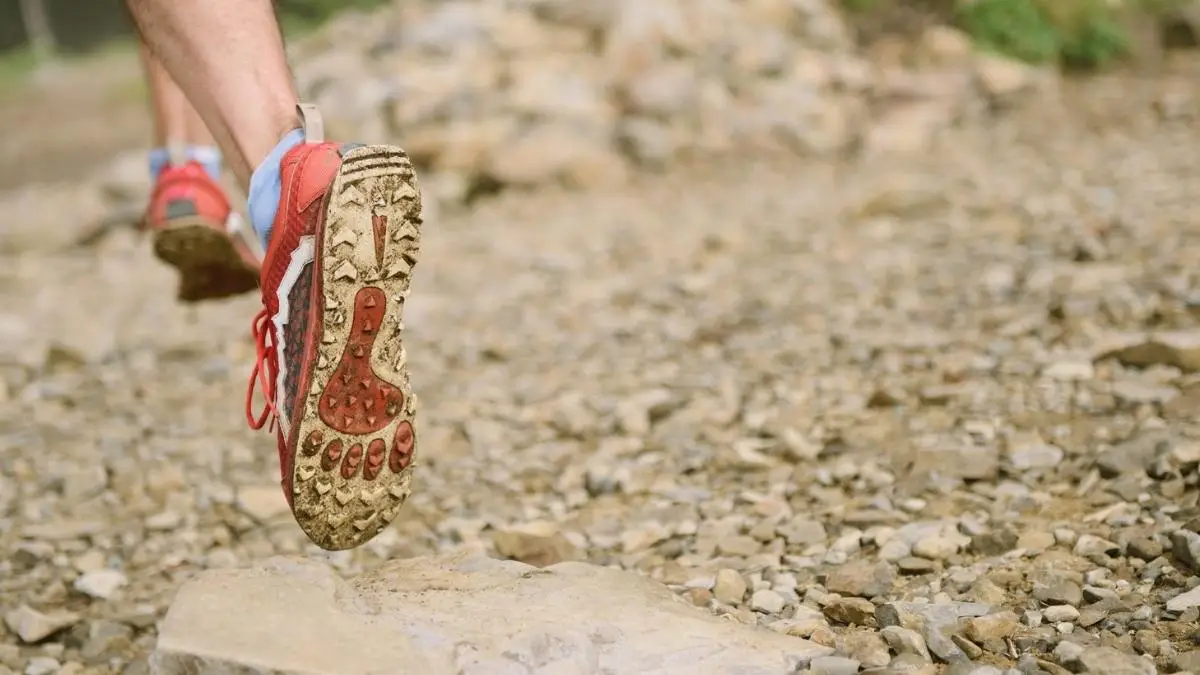
The Mistake: You start your hike too late in the day. You don’t have a good idea of how long the hike will take. You don’t have a set “turnaround time”.
Why It Ends Your Trip: Getting caught in the dark makes everything more dangerous. It’s almost impossible to find your way. The risk of falling goes way up.
The temperature can drop fast. And being lost in the dark is very stressful. This is a common way to end up spending an unplanned night in the woods.
The Fix: Be smart about your time.
- Estimate Your Hike Time: Here’s a simple way to guess how long your hike will take:
- Start with a base time. For example, 30 minutes for every mile.
- Add one hour for every 1,000 feet of elevation gain.
- Add extra time for breaks.
- Set a Turnaround Time: Before you start, decide on the latest time you will turn around to get back before dark. It doesn’t matter if you’ve reached your goal. You have to stick to this time.
- Start Early: Starting early gives you more daylight to work with if something goes wrong. It also helps you avoid the hottest part of the day and afternoon thunderstorms.
11. Being a Jerk on the Trail
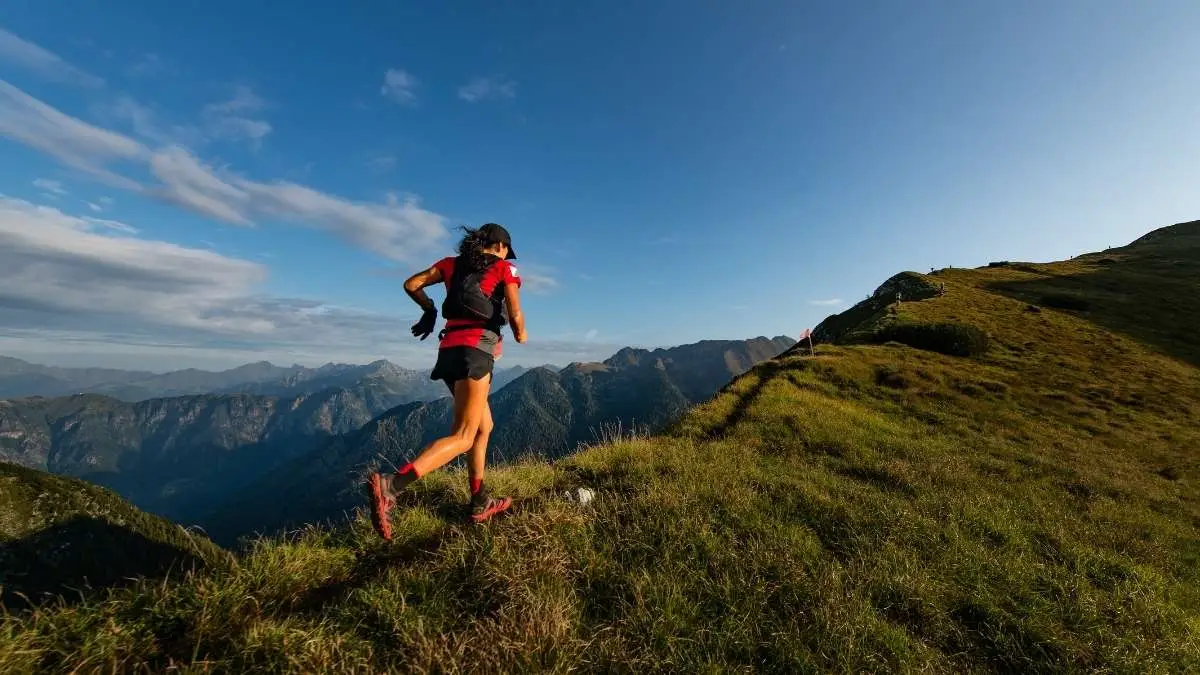
The Mistake: You don’t understand that the wilderness is a shared and fragile place. You act like you’re in a city park. You play loud music, cut switchbacks, leave trash behind (even things like orange peels), and don’t dispose of your poop properly.
Why It Ends Your Trip: This might not end your trip, but it ruins the experience for everyone else. A 2024 survey found that 61% of hikers on the Appalachian Trail want solitude.
Loud music destroys that. Your actions also damage the environment. Litter is ugly and hurts animals. The biggest complaints on the trail are all about people not following Leave No Trace (LNT) rules.
The Fix: Learn and follow the Leave No Trace principles.
- A Quick Guide to Trail Rules:
- Who Goes First: Uphill hikers have the right of way. Hikers should let horses pass. Bikers should yield to both.
- Be Quiet: Use headphones for music.
- Stay on the Trail: Don’t cut switchbacks. It causes a lot of damage.
- The 7 Leave No Trace (LNT) Principles: These are simple rules to follow: Plan Ahead and Prepare; Travel and Camp on Durable Surfaces; Dispose of Waste Properly; Leave What You Find; Minimize Campfire Impacts; Respect Wildlife; and Be Considerate of Other Visitors.
12. Getting Separated from Your Group
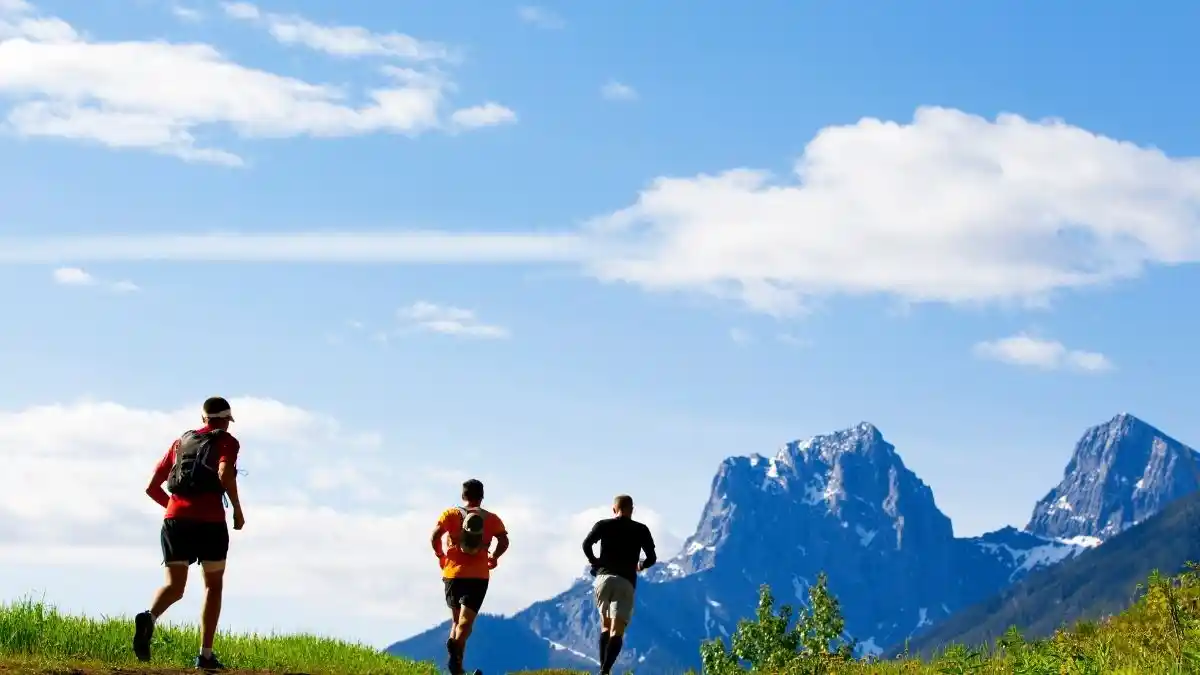
The Mistake: Your hiking group spreads out too much. The fast hikers get way ahead, and the slow hikers are left behind, out of sight.
Why It Ends Your Trip: A hiking group is a safety team. When you separate, you break that team. If the person in the back gets hurt or takes a wrong turn, the people in front might not know for miles.
The group’s supplies—like the first-aid kit and extra water—are split up and not available to the person who needs them.
The Fix: Stay together as a group.
- The Golden Rule: The National Park Service has clear advice: “Let the slowest hiker set the pace” and “Always stay together”. To do this, put the slowest hiker near the front of the group. This will naturally set the pace for everyone.
- Communicate: Before you start, agree to wait for everyone at every trail junction. If one person stops, everyone stops.
13. Not Knowing How to Use Your Camping Gear
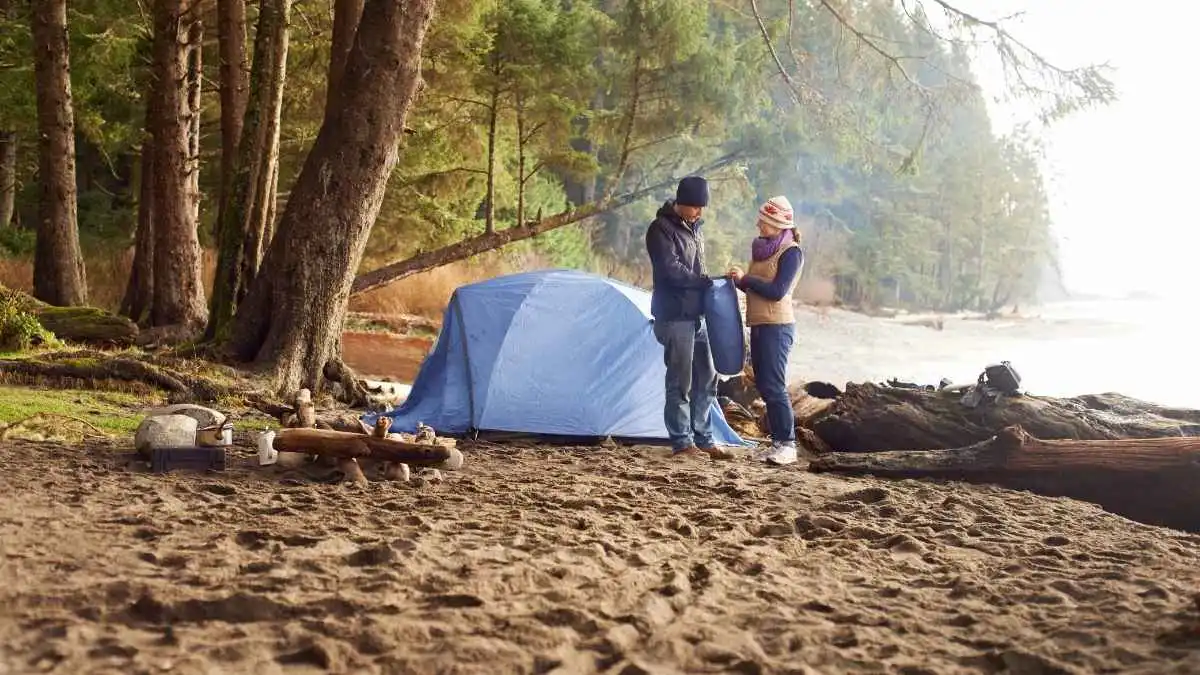
The Mistake: This is for first-time backpackers. You don’t practice setting up your tent or using your stove at home. You pick a bad campsite, like in a low spot that could flood. You don’t stake your tent down properly.
Why It Ends Your Trip: If your shelter fails on a multi-day trip, the trip is over. Waking up in a cold puddle because you pitched your tent in a low spot is a terrible experience.
Having your tent blow away in the wind is even worse. Buying gear is not the same as knowing how to use it.
The Fix: Practice makes perfect.
- Practice in Your Backyard: Test all your new gear at home before you rely on it in the woods. Set up your tent. Light your stove. Use your water filter. This helps you find any problems when it’s easy to fix them.
- How to Pick a Good Campsite: Follow these simple rules :
- Look for flat, hard ground like packed dirt.
- Never camp in a low spot or a dry creek bed.
- Look up. Make sure there are no dead trees or branches that could fall on your tent.
14. Getting Too Close to Wildlife
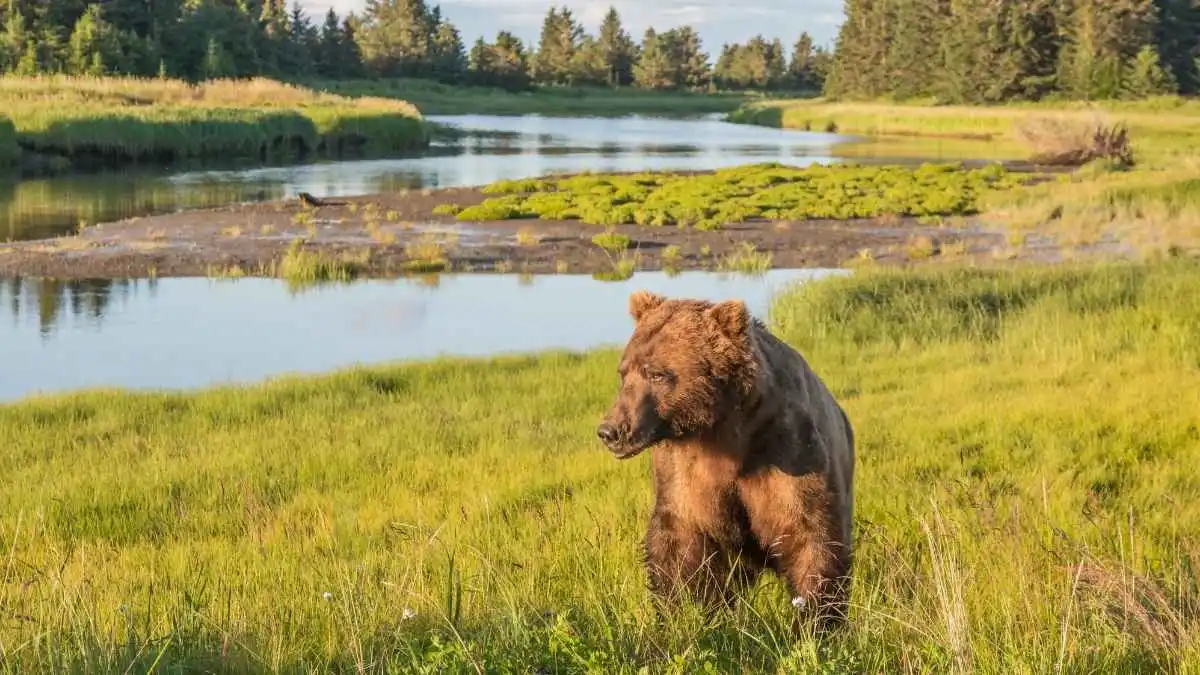
The Mistake: You think wild animals are like pets in a zoo. You get too close to take a picture. You feed animals like squirrels. You leave food or smelly things like toothpaste out at your campsite.
Why It Ends Your Trip: This is dangerous for you and the animal. Getting too close to a bear, moose, or bison can cause them to attack. Feeding small animals makes them aggressive and they can bite you.
If you don’t store your food right, a bear might destroy your tent and pack to get it. This leaves you with no food and ends your trip. An animal that gets used to human food often has to be killed by park staff.
The Fix: Keep your distance and store your food properly.
- The Rule of Thumb: Stay at least 100 yards away from bears and wolves. Stay 25 yards away from all other animals. Use a zoom lens for photos.
- Store Your Food Right: All food, trash, and smelly items must be stored in a bear-proof container or hung in a “bear bag”.
15. Letting Your Goal Cloud Your Judgment
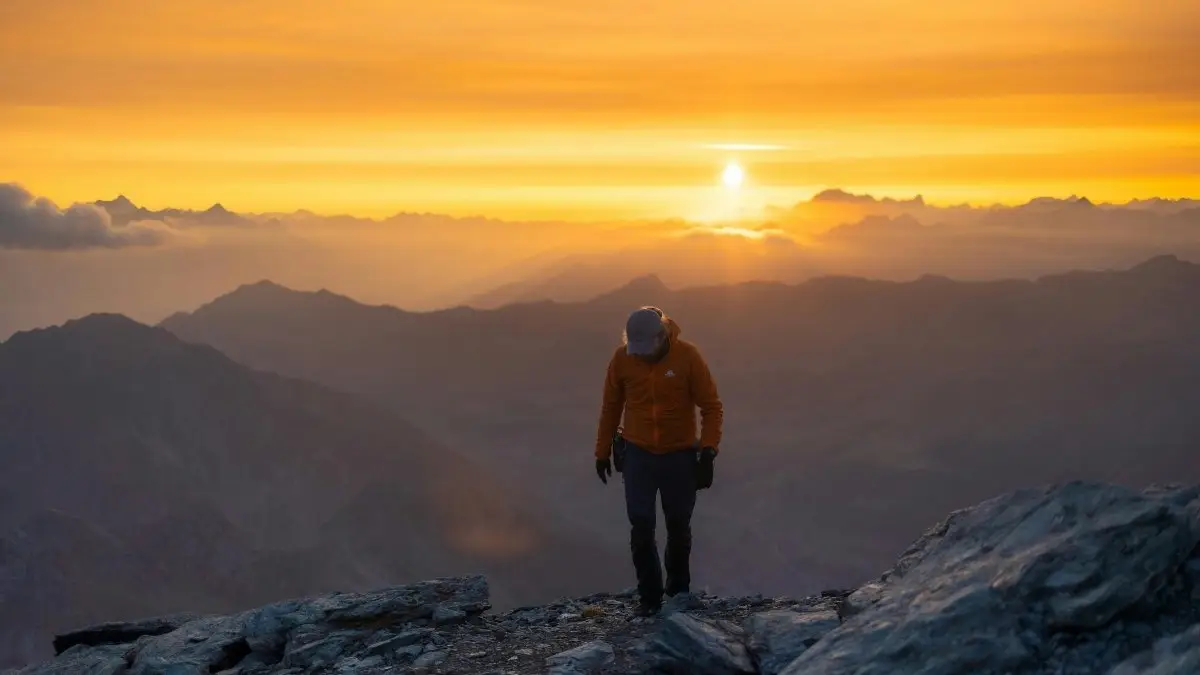
The Mistake: This is the big one that makes you ignore all the other warning signs. It’s called “summit fever.” You become obsessed with reaching your goal—a summit, a lake, a waterfall—no matter what. You ignore bad weather, the time, or how your body feels.
Why It Ends Your Trip: Summit fever is often the last mistake in a chain of bad decisions. It’s what makes you push on through a thunderstorm (Mistake #6), ignore your turnaround time (Mistake #10), or push through being exhausted (Mistake #9).
It’s when you choose to ignore your common sense. It’s a factor in many mountain tragedies.
The Fix: Change how you think about success on a hike.
- The Summit is Only Halfway: Getting to your destination is only half the trip. You still have to get back safely. The only real goal of any hike is to return to the trailhead safely.
- Turning Back is a Sign of Strength: Turning around is not failure. It’s a sign of experience and wisdom. It’s the smart choice that lets you come back and hike another day.
- Decide Your Limits Before You Go: It’s easier to make the decision to turn back before you’re tired and emotional. Before you start, agree on your turn-back rules: “If it starts to rain, we turn back. If we’re not at the top by 1 p.m., we turn back.” This makes it easier to stick to the plan when things get tough.

